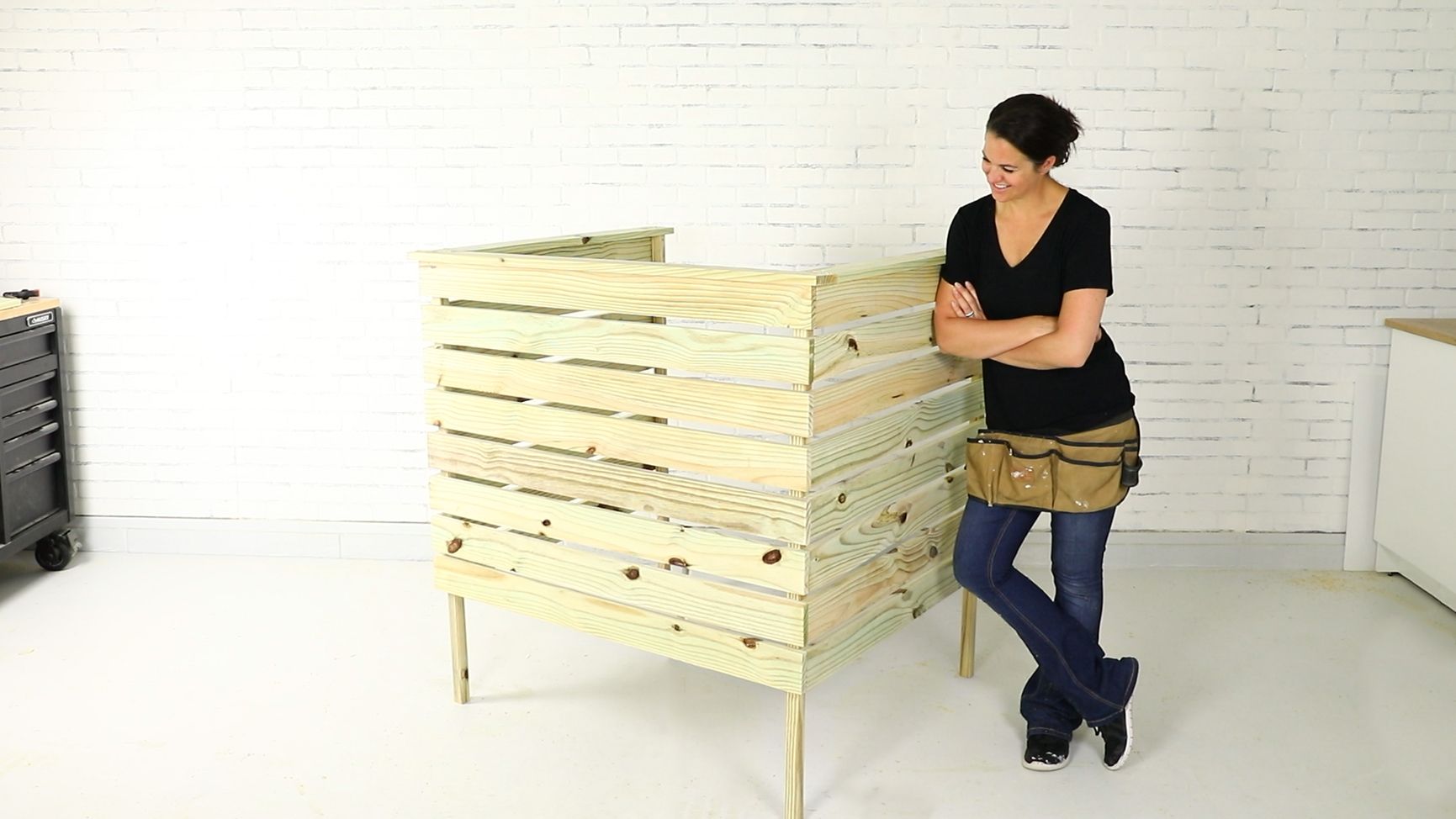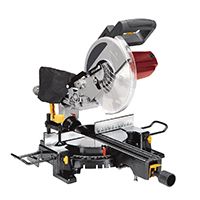Project details
Skill
Cost
Estimated Time
Outdoor air conditioners keep your home comfortable in warm months, but they can be an eyesore in your yard. Luckily, you can make a stylish cover to conceal the unit without interfering with airflow. Read our guide below for instructions on building an AC cover and a list of what you’ll need to get the job done.
Outdoor AC Cover: Materials and Tools Needed
To build your AC cover, use weather-resistant materials like treated wood, metal, or durable plastic. Avoid using materials that trap moisture, as this can lead to rust or mold. For this project, we used pressure-treated wood. Below are the materials and tools you’ll need.
Materials
Start with the following materials, most of which you can find at home improvement stores:
- 2-inch deck screws
- 14 pressure-treated 1x4x8 feet boards
- Two pressure-treated 2x2x8 feet boards
- Wood glue
Tools
You’ll also need the following tools:
- 4-foot level
- Drill/driver
- Hand clamps
- Miter saw
- Pencil
- Shovel
- Tape measure
Steps for Building an Outdoor AC Cover
Follow the steps below to successfully build your AC cover.

Step 1: Prepare the Wood
Cut the wood to the appropriate sizes before you start assembly. Below are the cuts you’ll need to make.
- Cut 24 48-inch pieces from the 1×4 boards for the slats
- Cut four 48-inch pieces from the 2×2 boards for the corners
- Cut one 48-inch piece from a 1×4 board for the front cap, and miter the ends at opposing 45-degree angles
- Cut two 48-inch pieces from 1×4 boards for the side caps, and miter one end of each at a 45-degree angle
Tip: Use a stop block on your miter saw to achieve consistent cuts.
Step 2: Build the Side Panels
Follow the steps below to construct the side panels, which will form the foundation of your AC cover:
- Lay two uprights parallel on a flat surface.
- Position a 1×4 board across the uprights that’s flush with their top edges.
- Use the board to space the uprights, and make sure they’re not angled.
- Use screws to secure the board to the uprights.
- Use a cutoff piece as a spacer to position the next board.
- Continue attaching boards until you have eight evenly spaced slats.
- Repeat the process to create the second side panel.
Step 3: Assemble the Front Panel
- Stand one side panel upright.
- Position a 1×4 board across the front, and cover the exposed edge of the adjoining board.
- Screw the board into place.
- Stand the other side panel upright and attach the board to it.
- Continue this process until you’ve installed all front boards.
Step 4: Add the Cap Pieces
- Cut the center cap to size, allowing for a 3/4-inch overhang on the front and sides.
- Position the center cap and screw it in place.
- Cut and attach the side cap pieces, and make sure they align with the center cap
Step 5: Install the AC Cover
- Position the assembly around your AC unit.
- Mark the placements of the legs.
- Remove the assembly, and dig 7-inch-deep holes at each leg location.
- Place the legs in the holes, and use a 4-foot level to make sure the assembly is level from front to back and side to side.
- Fill in the holes around the legs to secure the structure.
Step 6: Add Finishing Touches
The finishing touches below can help you to transform your AC cover into an attractive garden feature:
- Add decorative elements such as climbing plants or latticework to integrate the cover into your landscape.
- Allow pressure-treated lumber to dry thoroughly before applying any finish.
- Choose a weather-resistant paint or stain to protect the wood and enhance its appearance.
Considerations for AC Unit Airflow
Follow the guidelines below so that you can enjoy your AC cover without affecting your air conditioner’s performance:
- Consult your AC unit’s manufacturer for specific recommendations.
- Keep one foot of clearance around the unit.
- Make sure you’ve left enough space between slats to allow proper airflow. Blocking ventilation can lead to overheating and reduced efficiency when the unit is in use.
- Check that the cover fits snugly over the unit but not so tight that it restricts airflow. It should also be easy to remove for maintenance and servicing.
- Ensure that the cover doesn’t come into contact with electrical components or create a fire hazard.
- In areas with heavy snowfall, consider a cover that can handle the weight of snow and keep it off the unit. During the summer, it may be best to remove the cover to avoid any potential heat buildup.
Our Conclusion
An outdoor AC cover can make your AC less noticeable while providing practical benefits like protecting the unit from the elements and keeping out leaves and debris. When building your cover, balance protection with ventilation, ensure proper fit and accessibility, and use materials that will withstand weather conditions. If you’re unsure about any part of the installation, consult a professional HVAC technician.







